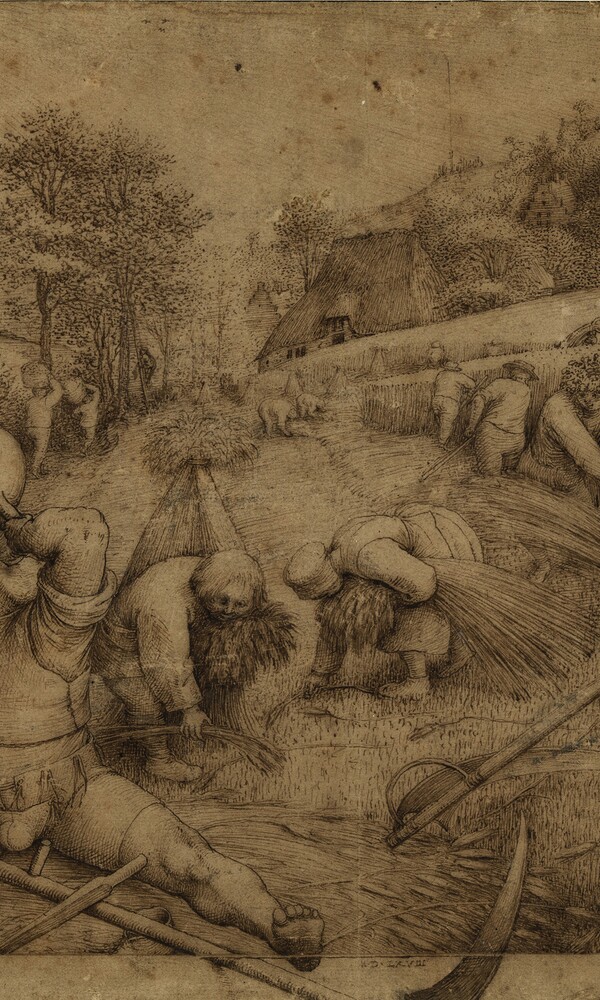With close to 1,400 works on paper, the Kunsthalle owns one of the world's most renowned collections of Dutch drawings from the years 1405-1850. Nearly all of the most important Dutch and Flemish draftsmen are represented here with works characteristic of their practice. The entire spectrum of four hundred years of Dutch drawings will be on view for the first time.
The exhibition Bruegel, Rembrandt & Co shows a selection of over 100 outstanding drawings ranging from an anonymous silverpoint drawing from 1460 and an early Dutch nature studies (Gerard David), to Pieter Bruegel's famous Summer, drawings by Dutch Romanists (Maarten van Heems-kerck, Lambert Lombard) and the Mannerists surrounding Hendrick Goltzius. The "Golden Century" is shown in all its technical and thematic diversity. Among the most important exhibited pieces from this era are The Taking of Christ, one of Anton van Dyck's most beautiful juvenile works and Rembrandt's Hl. Hieronymus in a Landscape, which is credited as one of the rarest etchings in the master's oeuvre. Works by Gerard de Lairesse and Willem van de Velde show the transition into the 18th and 19th centuries with picturesque, often colorfully executed drawings. Work from this era is less well known in this country, and much of the exhibited work will be shown to the public for the first time.
Dutch and Flemish artists typically specialized in certain "areas", giving way to the wide array of subject matter reflected in the work: landscape and history, genre and marine paintings, still lifes, city views, portraits and animal studies. These can be experienced and studied in concentrated form. At the same time, various pieces in the exhibition show the various functional references to the »drawing« genre: from the study to purposive outline drafts, all the way to the self-contained drawings catered specially to the art market.
